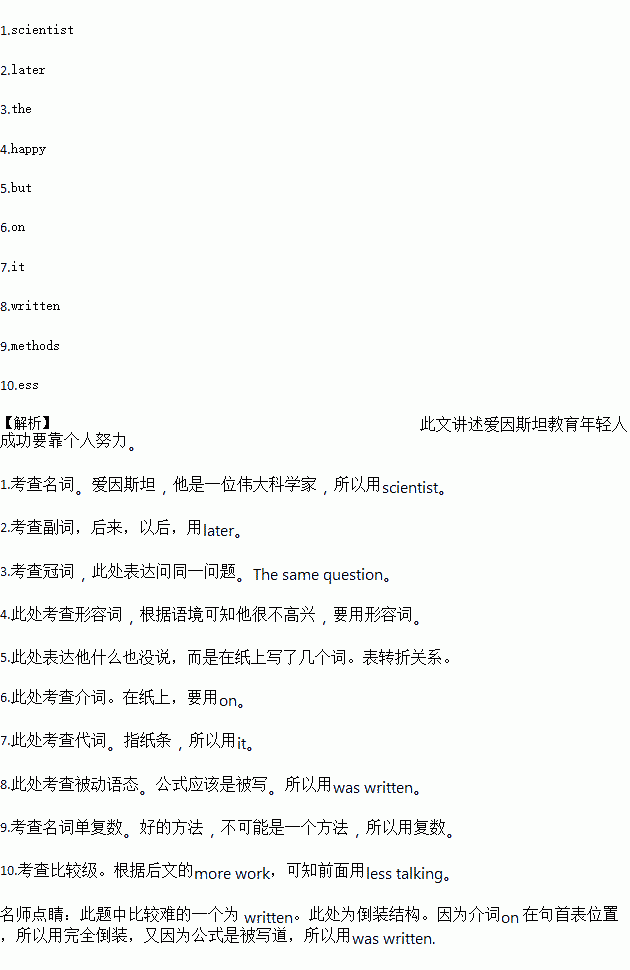题目内容
One day, a young man asked Albert Einstein, a great 1. (science), what the secret of success was. The scientist told him that the secret of success is hard work. A few days 2. (late), the young man asked him 3. same question again. Einstein was not very 4. (unhappy). He didn’t say anything, 5. wrote a few words 6. a piece of paper and handed 7. to the young man. The young man looked at the paper. On it was 8. (write): A = X + Y + Z. “What does this mean?” asked the young man. “ A means success,” said the scientist. “ and X means hard work, Y means good 9. (method), and Z means 10. (little) talking and more work.”
练习册系列答案
 激活思维优加课堂系列答案
激活思维优加课堂系列答案 活力试卷系列答案
活力试卷系列答案 课课优能力培优100分系列答案
课课优能力培优100分系列答案
相关题目


 two live in the same place and eat the same food. But North American lobsters are larger, stronger and more aggressive (好斗的) than European lobsters, and they produce young more quickly.
two live in the same place and eat the same food. But North American lobsters are larger, stronger and more aggressive (好斗的) than European lobsters, and they produce young more quickly.